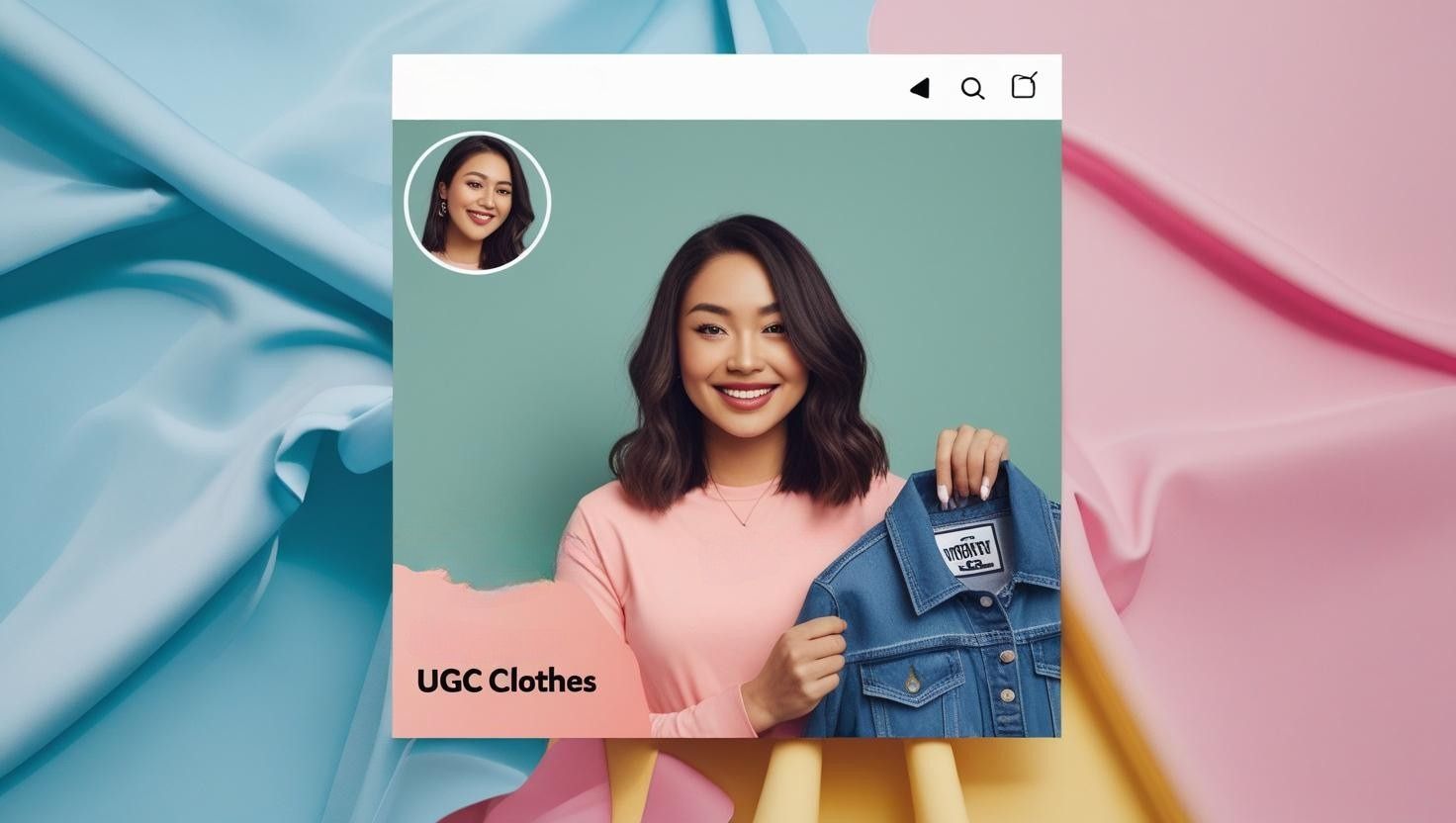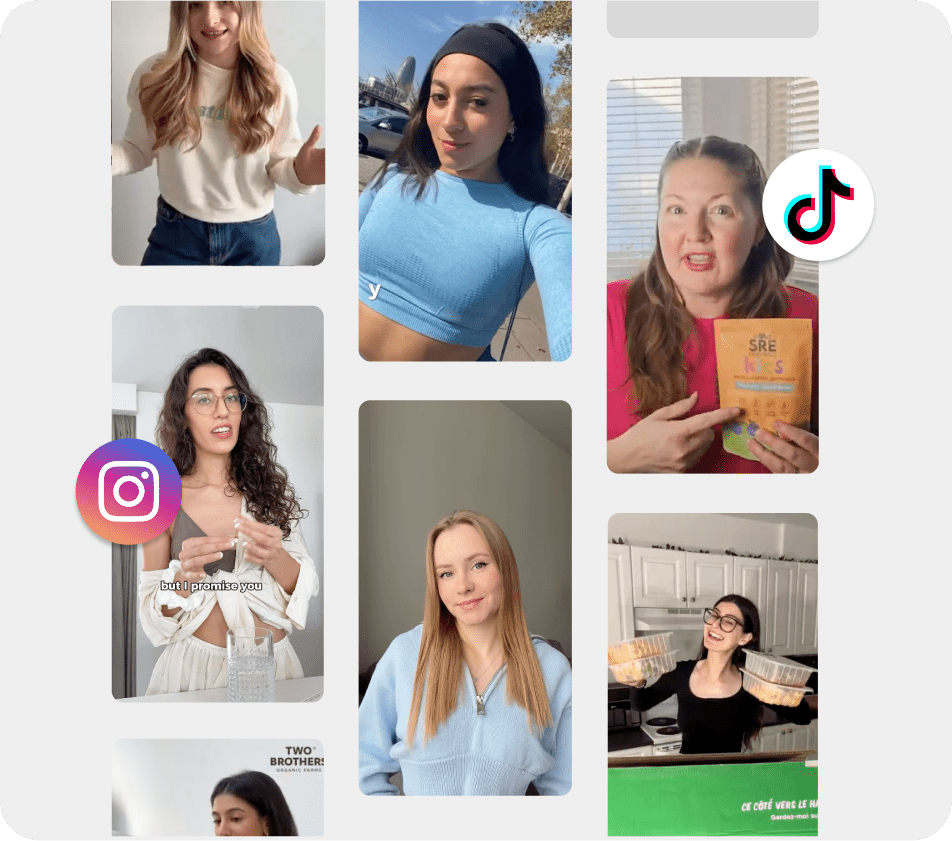User-generated content (UGC) has become a game-changer for industries worldwide, and the fashion industry is no exception. UGC clothes campaigns are reshaping how clothing brands connect with customers, build trust, and drive conversions. These campaigns empower customers to become brand advocates and content creators, leading to more authentic storytelling, higher engagement, and increased visibility. In this guide, we explore what UGC is, why it matters, how to use it effectively, and how brands can leverage geo-targeted strategies to maximize impact.
What Are UGC Clothes?
UGC clothes refer to content created by consumers featuring fashion products, typically shared on platforms like Instagram, TikTok, YouTube, or Pinterest. This includes outfit-of-the-day (OOTD) images, unboxing videos, styling tutorials, review photos, and more. The content is created organically by customers who genuinely like the product or are incentivized to share their experience. UGC contrasts with traditional marketing because it showcases real people wearing and using clothes in their everyday lives, often offering more relatable and diverse representations. This authenticity helps potential customers see themselves in the clothes and builds stronger emotional connections with the brand.
Benefits of UGC in the Clothing Industry
- Authenticity: People trust content shared by real customers over brand advertisements. UGC provides honest, unfiltered feedback and styling inspiration.
- Higher Engagement: Social algorithms prioritize authentic and interactive content. UGC often receives more likes, comments, and shares than branded content.
- Boosts Sales: When shoppers see others like them wearing a product, it boosts purchase intent. UGC serves as powerful social proof and drives conversion rates.
- SEO-Friendly: UGC creates fresh, keyword-rich content that improves search rankings and visibility. It also increases dwell time on product pages.
- Community Building: Encouraging customers to share content makes them feel valued and part of a larger community. This fosters loyalty and repeat business.
Types of UGC for Fashion Brands
- Selfies & OOTD Posts: Customers showing off their daily outfits using a brand’s clothing, often tagged with branded hashtags.
- Try-On Hauls: UGC Videos on YouTube, Instagram Reels, or TikTok where customers try multiple outfits and give their thoughts on fit, quality, and style.
- Unboxing Videos: First impressions of receiving and unpacking clothing items, offering real-time reactions to packaging, fabric, and styling.
- Style Guides from Users: Customers sharing how they styled a piece in different ways for various occasions.
- Photo Reviews: User-submitted images alongside reviews on product pages help future buyers make informed decisions.
Examples of UGC in Clothing Brands
- ASOS: The #AsSeenOnMe campaign showcases customer photos wearing ASOS products, which are often featured on the brand’s product pages.
- Zara: Uses its community to share real-life styling, often reposting UGC in Instagram Stories and highlights.
- Gymshark: Built a loyal fitness community through UGC, user shoutouts, and collaborations with everyday athletes.
- Suta & Snitch (India): These brands thrive on UGC by showcasing diverse customers, encouraging user submissions, and celebrating authentic representation.
How to Collect UGC for a Clothing Brand
- Branded Hashtag Campaigns: Create a unique and memorable hashtag that customers can use to tag their content.
- Giveaways & Contests: Offer prizes for the best outfit photos or styling videos using your products.
- Email Post-Purchase Requests: Encourage buyers to leave a UGC review and upload a photo or video.
Email Post-Purchase Requests: Encourage buyers to leave a review and upload a photo or video. - Micro-Influencer Collaborations: Partner with relatable creators who spark community content.
- Feature Customer Content: Regularly spotlight customers on your homepage, social media, and newsletters to incentivize others.
Social Platforms for UGC Clothes Campaigns
- Instagram: Ideal for sharing images, Reels, and customer tags. The platform’s Explore page amplifies reach.
- TikTok: Best for storytelling, transformations, and relatable fashion moments that go viral.
- Pinterest: Great for visual inspiration boards using UGC for seasonal and occasion-based fashion.
- YouTube: Long-form content like fashion hauls and reviews helps with detailed product exploration.
- Shopify/WooCommerce: With UGC plugins, brands can display user photos directly on product pages.
Third-Party Tools to Manage and Display UGC for Clothes
- Tagbox: Allows brands to collect, curate, and display UGC galleries across websites, email, and social.
- Yotpo: Integrates product reviews, photo uploads, and loyalty rewards.
- Pixlee TurnTo: Offers influencer discovery and content management.
- Loox: Visual review tool with customizable widgets, especially for Shopify.
- Bazaarvoice: Syndicates user content across retail and brand websites.
UGC Clothes Strategy: Step-by-Step
- Define Clear Objectives: Determine whether you want to build trust, increase conversion, or grow your social reach.
- Understand Your Target Audience: Age, location, and fashion preferences help shape the kind of content they’re likely to create and engage with.
- Develop a Branded Hashtag: Make it easy to remember, fun, and relevant (e.g., #MyUrbanLook, #StyledByYou).
- Engage with UGC Creators: Like, comment, and reshare to show appreciation and encourage more submissions.
- Offer Incentives: Provide small discounts, loyalty points, or shoutouts for quality content submissions.
- Showcase UGC Strategically: Place user content on product pages, lookbooks, and in social media ads.
- Analyze and Optimize: Use UGC performance data to understand what works and refine future campaigns.
Geo-Targeted UGC Clothes Campaigns
- Regional Hashtags: Use location-specific hashtags such as #MumbaiStreetStyle, #NYCLooks, or #LondonOOTD to localize campaigns.
- Festival-Themed Content: Leverage local events and festivals (e.g., Eid, Diwali, Holi, Coachella, or Fashion Week) to spark relevant UGC.
- Localized Influencers: Collaborate with regional micro-influencers to build authenticity in specific markets.
- Geo-Based Landing Pages: Display UGC from users in a specific city or country to connect better with local audiences.
Legal and Ethical Aspects
- Request Rights to Content: Always ask users for permission before reposting or using their content commercially.
- Provide Credit: Tag and mention creators prominently.
- Promote Diversity & Inclusion: Feature customers of all sizes, ethnicities, and backgrounds.
- Avoid Over-Editing: Keep content authentic by avoiding excessive photo editing or altering reality.
Top Hashtags for UGC Clothes
- Global: #OOTD, #StyleByMe, #RealStyle, #EverydayLooks
- USA: #CaliforniaChic, #NYCFashionFinds
- UK: #LondonStreetStyle, #BritStyleUGC
- India: #SareeNotSari, #DesiLooks, #DelhiOOTD
- Australia: #SydneyStreetStyle, #AussieFits
The Future of UGC in the Fashion Industry
- AI-Powered UGC Personalization: Recommending styles based on customer-uploaded images.
- Augmented Reality & UGC: Try-ons featuring UGC integrated with AR features for virtual fitting rooms.
- Community-Led Design: Letting users vote or co-create upcoming collections.
- Sustainability through Storytelling: Encouraging users to share stories of outfit re-wearing and upcycling for conscious fashion promotion.
Conclusion:
UGC clothes campaigns are transforming the fashion landscape by making it more inclusive, authentic, and community-driven. Whether you’re running a global brand or a boutique label, embracing UGC can help you build stronger customer relationships, improve marketing efficiency, and ultimately drive growth. Start integrating UGC into your strategy and let your most loyal customers lead the storytelling.


